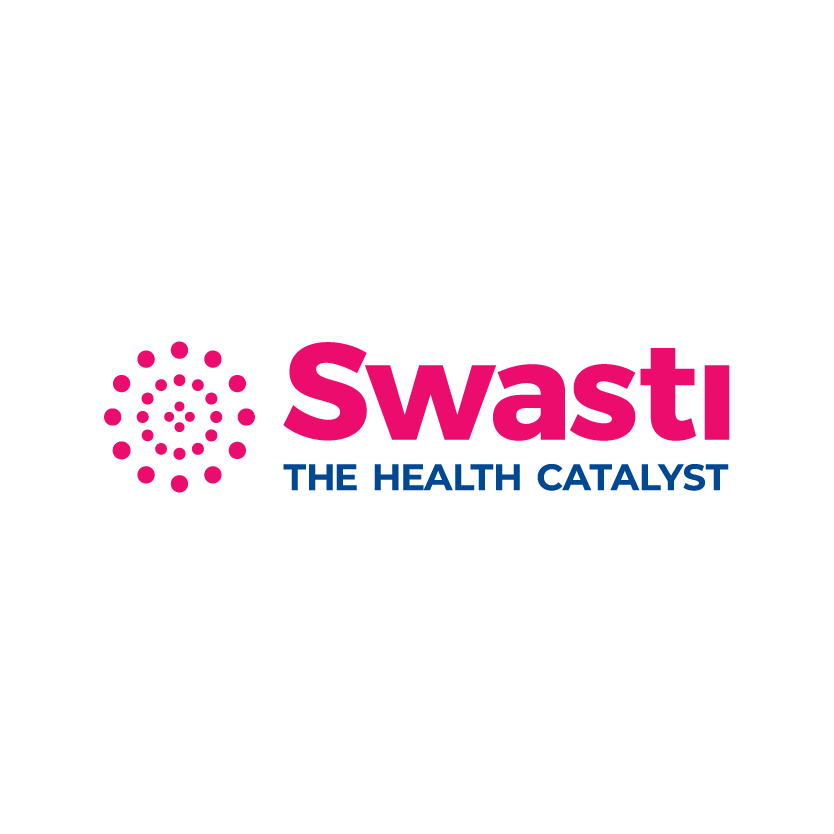

This section presents actionable insights for practitioners from our collaboration of experts.
Analysis
FILTER
BY CATEGORY
View All
TB and COVID-19: Lessons on Infection Control
08 Aug 2020by Blessina Kumar and Bhumika Nanda 8 min read
COVID-19 and Tuberculosis (pulmonary) are similar on specific grounds yet strikingly different in response and awareness. Rather than comparing them, this blog looks to explore the best practices and learnings from the COVID-19 response that could be transferred to the Tuberculosis (TB) response and vice versa, in order to complement national and global responses. Cross-learning and timely interventions have the potential to save more lives by building up our defenses against prospective global health threats.
Tuberculosis is a communicable disease that has been around for centuries. It is mainly a respiratory disease but can affect other parts of the body such as the brain, kidneys and spine. The most effective approach to prevent active tuberculosis transmission is a combination of active tracing, taking medication to reduce bacterial load, social distancing and maintaining ventilation in close quarters, maintaining cough etiquette, and avoiding public places until 2 weeks with medication or three consecutive negative AFB sputum tests.
Worldwide, TB is one of the top 10 causes of death and the leading cause from a single infectious agent, claiming more than 4000 lives each day.
Does this remind you of a rapidly spreading pandemic that has us self-quarantined at home?
Shocking, isn’t it?
Table 1: What the similarities and differences between COVID-19 and Pulmonary TB mean for you
Analyzing factors that are common to both illnesses can help bridge the gaps and deepen our understanding of best practices. As such, the considerable overlap between TB and COVID-19 in terms of prevention, case detection, contact tracing, and non-pharmaceutical interventions presents a unique opportunity to devise strategies that can help tackle both diseases using a cross-functional approach.
Through this blog, we will examine the two principles of infection control-triaging and care cascade.
1. Triaging
Patient triage is the process of rapidly determining the best treatment for patients based on their specific needs and anticipated outcome of care. WHO recommends triaging of people with TB signs and symptoms or with TB disease, to reduce M. tuberculosis transmission to health workers or other persons in settings with a high risk of transmission. Even though guidelines for triaging have been developed for TB, implementation is low and uptake minimal mainly due to a lack of consistency in investment and political commitment. COVID-19 has seen a tremendous push for compulsory triaging processes at healthcare facilities.
Here are a few factors that have helped successful triaging practices with COVID-19:
● Consistent political will: The objective of breaking the chain of transmission was aligned with political agendas, ensuring that the communication of the urgency for infection control through triaging was consistent across all verticals. The joint efforts of the central and state governments working together have shown exponential results, especially in terms of access and adherence to Standard Operating Procedures (SOPs).
● Task sharing with private facilities: Joining forces with the private sector helped relieve much of the burden state-owned hospitals had been facing in their lone war against the virus, thereby equipping both parties with the resources needed to care for the burgeoning coronavirus cases. The number of beds dedicated to COVID patients in any private facility was under the sole discretion of the state. Depending on the severity of the spread, it was anywhere between 20% to 50% of all beds.
● Establishing communication channels: Several critical studies of health communication clearly show that establishing an efficient channel for two-way communication between the government and the public is essential for influencing attitudes and behaviors towards a disease. The Indian government’s Aarogya Setu app, which aims to provide appropriate information about COVID-19 transmission, precautions, self-assessment and contact tracing garnered over 500,000 downloads within a few days of being introduced and today, over 14 crore people use it.
Increased awareness about the disease has also helped in maintaining the quality of triaging in hospitals. In Delhi, the state Government has a 24/7 helpline number for patients who are denied admissions or face difficulties in accessing appropriate treatment at facilities. Following up on feedback about long waiting periods, the Government was quick to update the guidelines to now state that the patient must be shifted from the vehicle to the triage area in 15 minutes and the triaging process should last no more than 3 hours.
● Using existing capacity-building systems: The response to COVID-19 can benefit from the capacity building efforts developed for TB over many years of investment by national authorities and donors. These include capacity building for infection prevention and control, contact tracing, household and community-based care, and maintaining a surveillance and monitoring system. However, these capacities were being underutilized prior to the pandemic: The added burden of training staff to observe infection control measures would have been reduced if these were already functional. Alongside systems and processes, the existing body of experts, including respiratory physicians, pulmonology staff of all grades, TB specialists, and health workers at the primary health care level may be points of reference for patients with pulmonary complications of COVID-19.
● Investing in long-term respiratory care triaging for health systems will be a sustainable approach in building existing capacities to battle future global health threats. Triaging for TB and COVID-19 require similar infrastructure and resource capacities. Coordinating both the approaches by developing a standard SOP for infectious diseases, could reduce the costs for each program and ensure that the health system is resilient to face prospective infectious diseases.
. . .
2. Care Pathway
The cascade of care is a pathway that evaluates patient retention across sequential stages of care required to achieve a successful outcome. This model was first used to evaluate HIV patients across the cascade and has more recently been used for TB. The World Health Organization (WHO) estimates that India has nearly 1 million “missing” TB patients, who have not been reported to the national TB program and who therefore may not have received effective TB care.
With the current pandemic in progress, TB case notifications across India have dropped by over 50% since March 2020, with an estimated 300,000 missed case notifications.
There have been many instances of gaps in patient retention during the COVID-19 pandemic as well. At the beginning of the pandemic, a trial-and-error method was adopted to report cases and deaths. One example is that of a massive data reconciliation exercise in Maharashtra, which found that at least 1,328 deaths of COVID-19 positive patients went unreported across the state.
The care cascade approach has been beneficial in TB to analyze gaps in quality across national programs and track large-scale patient outcomes. Since both TB and COVID-19 have similar screening and tracking pathways, the care cascade can provide critical information on the quality of care to national programs for infectious diseases.
By providing a systematic approach to evaluating care delivery, followed by corrective interventions, the care cascade may serve as an important tool for achieving the reduction of incidence for both TB and COVID-19 cases. The following are some of the factors that enable a successful care pathway:
● Identifying comprehensive pathways that are leak-proof:
The patient pathways for MDR/XDR TB are prolonged and vary from drug-sensitive TB. In the TB cascade, tracking these disease outcomes under a single cascade led to significant gaps in the care continuum. Specific disease forms should be accounted for in the cascade and explored in-depth and process indicators for the same should be developed and monitored. For COVID-19, the presence of comorbidities, advanced age and socially vulnerable cases should be included in the cascade.
A sample cascade of care for COVID-19
● Simple and scalable M&E system to track milestones:
Most COVID-19 patients seek care from the private sector, which makes it difficult to track cases across the sequelae. Building a robust M&E system to track COVID-19 indicators in the public sector cascade and extension of this analysis to private sector patients could enable better targeting of interventions and resources. The diagram below is an illustration of the cascade for COVID-19 inspired by the TB cascade. The cascade will guide troubleshooting of the core systemic issues in service delivery and approach such as active testing vs symptomatic testing, and the capacity of healthcare facilities to manage adverse cases.
● Leverage common technology to integrate testing: To identify the missed thousands of patients, we need to leverage the most innovative technologies and find solutions to integrate testing for both respiratory infections. The digital chest X-ray (CXR) could be deployed along with artificial intelligence (AI) based tools for both TB and COVID-19. GeneXpert is another such example: using this platform, TB can be detected using a cartridge called Xpert MTB/RIF and COVID-19 by using the Xpress SARS-CoV2 cartridge.
Modeling work by WHO suggests that the COVID-19 pandemic might lead to a global reduction of 25% in expected TB detection for 3 months — a realistic possibility, given the levels of disruption in TB services being observed in multiple countries. Knowing the similarities is not enough unless it is complemented with medical and socio-economic components to address the differences. Faced with this reality, we should be prepared to use resources wisely and collaboratively to ensure that the cross learnings generated are used appropriately across the health system.
This blog is co-authored by Blessina Kumar and Dr Bhumika Nanda.
Blessina Kumar is a health activist with a background in Community Health and Health Systems Management and is the co-founder and CEO of the Global Coalition of TB Activists (GCTA), the first and only global network of people affected by TB.
Bhumika Nanda is a public health specialist at Catalyst Management Services. She has experience working in the private sector, global organizations, and community-based organizations, and is passionate about primary care, Universal Health Coverage and understanding system linkages in the health sector.
. . .
Learnings from TB span a history, and this is only the first in the series of these learnings that can be used for COVID-19. Keep watching this space for more on:
● Stigma reduction
● Testing
● Innovations in testing, devices
● Comorbidity awareness
● Lessons from the National TB program
Categories
COVID-19

 EXPLORE DATA
EXPLORE DATA 



























